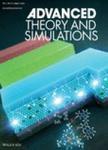版权所有:内蒙古大学图书馆 技术提供:维普资讯• 智图
内蒙古自治区呼和浩特市赛罕区大学西街235号 邮编: 010021

作者机构:Taiyuan Univ Technol Coll Elect & Power Engn Taiyuan 030024 Peoples R China
出 版 物:《ADVANCED THEORY AND SIMULATIONS》 (Adv. Theory Simul.)
年 卷 期:2021年第4卷第6期
核心收录:
基 金:Key Research and Development (R&D) Projects of Shanxi Province [201903D121015 201803D221028-2]
主 题:multi-objective genetic algorithms power generation characteristics thermoelectric generators waste heat
摘 要:The combined use of flue gas waste heat resources and thermoelectric generators (TEGs) is considered to be a relatively reliable method to generate electricity. The focus of this study is on the optimization and improvement of the hot-end heat collection pipe. This paper aims to increase the temperature difference between hot and cold ends of TEG and enhance uniformity of temperature distribution, thereby improving the output power of the TEG system. To balance the temperature difference between the cold and hot ends of the TEG, the pressure drop from the inlet to the outlet and the mass of TEG hot end pipes, a finite element simulation model is constructed. Meanwhile, a multi-objective genetic algorithm is applied to optimize the structure of four dimensions: fin bottom length, fin height, fin thickness, and outlet diameter. Three optimization objectives, namely, average temperature difference, total pressure drop from inlet to outlet, and pipeline mass are globally optimized to determine the best size, based on which the accuracy of the simulation model is verified by conducting experiments.